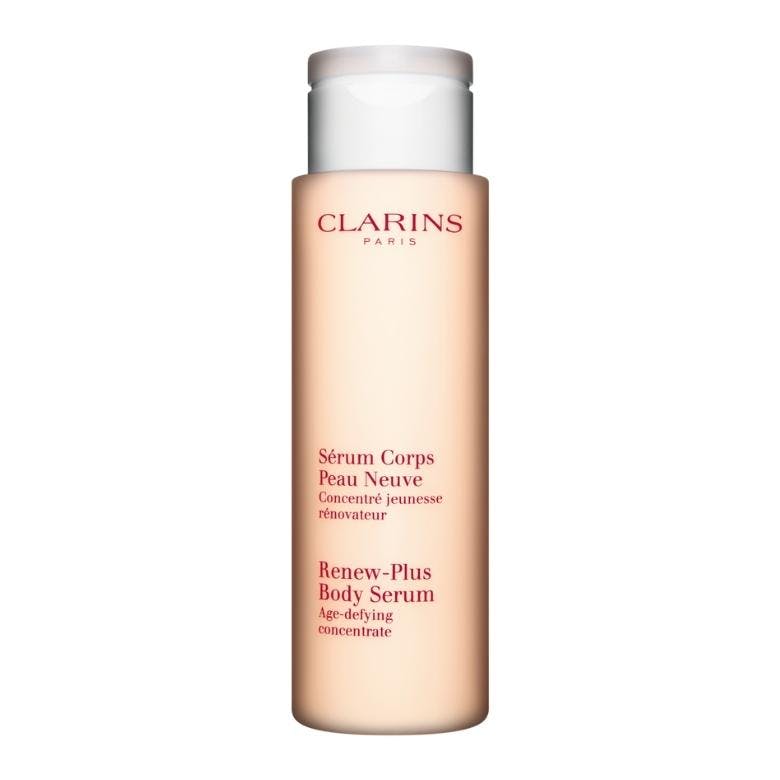Keratosis Pilaris: Everything You Need to Know
4 minutes read
According to the British Skin Foundation, approximately 40% of adults suffer from keratosis pilaris, also known as KP. Ever noticed tiny, raised spots that almost look like permanent goosebumps on your arms or legs? They can make the surface of the skin feel rough to touch and often get worse during winter.
While this condition is harmless, it can sometimes feel itchy and uncomfortable. And if it’s getting in the way of your pursuit for smooth skin, there are methods to treat it. Here’s everything you should know.
What is keratosis pilaris?
According to the NHS, “keratosis pilaris is a very common harmless condition where small bumps appear on your skin.”
“It can lead to roughness or bumpiness of the skin but is often without (other) symptoms.” says Dr Marisa Garshick, NYC-based board-certified dermatologist.
She adds: “If the skin is irritated, it may be itchy or painful. Typically, it appears as 1-2 mm-sized bumps that typically show up on the upper arms or legs. They may be skin coloured or associated with redness.”

What causes keratosis pilaris?
“The condition occurs when keratin or dead skin gets trapped in the hair follicle,” explains Dr Garshick. “This can cause bumpiness and roughness on the skin, which is why it’s also known as chicken skin.”
“It’s often worse when the skin is dry. So it may be more likely to occur in people with eczema or dry skin.” This is why these bumps tend to appear more during the colder months when the air is dry.
According to the American Academy of Dermatology (AAD), women are more likely to get keratosis pilaris than men. Your chances are also higher if you have eczema, asthma, excess body weight, ichthyosis vulgaris or have close blood relatives who also suffer from the condition.
Can keratosis pilaris be prevented?
While it can’t be prevented, for those predisposed to it, you can take steps to keep it under control. “It can be helpful to use gentle moisturisers and exfoliating products,” says Dr Garshick. “Additionally, gentle cleansers can be helpful as opposed to harsh soaps to prevent excessive dryness of the skin.”
Treating and managing keratosis pilaris
Unfortunately, no permanent fix will keep it from ever returning. The solution, instead, is offering consistent care. Treat it like dry skin. It’s important to exfoliate regularly. This will help eliminate dry skin cells lingering on the surface and ensure your moisturiser sinks in.
“I often recommend using exfoliating products such as chemical or physical exfoliants to help gently remove the dead skin,” Dr Garshick advises. “Some exfoliating ingredients that can be helpful include lactic acid, urea, glycolic acid and salicylic acid.”
She adds: “It is also important to use products that hydrate and moisturise the skin to minimise irritation and dryness. Retinoids can also be helpful.”
Clarins Training Manager Charlotte McHale recommends a star product that’s formulated almost exclusively to treat bumpy, rough skin.
“The Renew-Plus Body Serum is a very lightweight serum that’s easily absorbed into the skin. It has a gentle biological exfoliator built into it that really helps with skin renewal,” she says. “Use it on the affected areas every day. If you want to see results, consistency is key. Don’t skip a day.”

She adds: “I also like to pair it with the Exfoliating Body Scrub, which you can use twice a week before applying the serum.”
Making a trip to the dermatologist’s? “In-office chemical peels can be helpful to soften and smooth the skin,” says Dr Garshick.
The British Association of Dermatologists (BAD) suggests that topical corticosteroids, photodynamic therapy, lasers and dermabrasion could also be worth trying – although it’s best to check with your dermatologist.
What not to do
There are things you could be doing that only make matters worse. Here are some pointers to keep in mind:
- Exfoliating the skin is essential, but over-exfoliation can damage the skin. You don’t need to exfoliate more than twice a week.
- “While both chemical and physical exfoliation can be helpful, it is important to avoid harsh or abrasive scrubs as these can irritate the skin,” warns Dr Garshick.
- If you choose to remove your body hair from any affected areas, consider laser hair removal instead of conventional hair removal methods. Shaving and waxing could make the condition worse.
- You want to avoid dryness at all costs and keep as much moisture in the skin as possible. So, don’t take showers or baths that are too hot, moisturise the skin regularly and invest in a humidifier if the air around you is dry.
- You may also want to give self-tanner a miss. The bumps on your skin will cause the tanner to spread unevenly, which can emphasise the texture on the skin, along with a build-up of product on the worst affected places.
In general, patience is key. However, keratosis pilaris is a condition that won’t vanish overnight but can be minimised with consistent care and attention.
Next reads: What Is Moisture Sandwiching And Should You Try It?
Sign up for our newsletter
We will keep you in the loop for special offers, exclusive gifts and product news.

